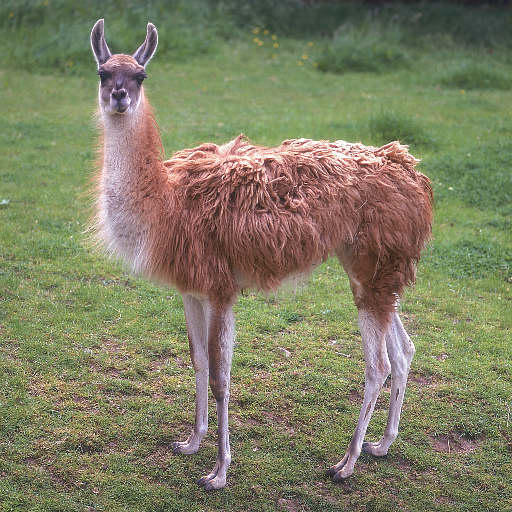
Guanaco(Lama guanicoe)
Phylum —chordata
Class — mammalia
Order — artiodactyla
Family — camelidae
Genus – lama
Appearance
The guanaco stands between 1.0 and 1.3 m (3 ft 3 in and 4 ft 3 in) at the shoulder, body length of 2.1 to 2.2 m (6 ft 11 in to 7 ft 3 in), and weighs 90 to 140 kg (200 to 310 lb).
A guanaco’s eyes are on the sides of its head, allowing it to look all around it for threats. Its ears are erect and straight, giving them a curious and attentive look. Like other camelids, guanacos walk on enlarged sole pads, only the tips of its hooves touching the ground. These pads are moveable, helping to provide a grip on gravelly and rocky terrain.
Its color varies very little (unlike the domestic llama), ranging from a light brown to dark cinnamon and shading to white underneath.
Habitat
Guanacos are native to the Andean mountains of South America. They can live at elevations from sea-level to over 4,500 meters. They are found in high-mountain regions of Peru, Bolivia and Chile as well as in Patagonian and Tierra del Fuego grassland in Argentina and Chile.
Behavior
Guanacos have a reasonably flexible social system, with populations being either migratory or sedentary, depending on the availability of forage. During the mating season, they are found in three main social units: family groups, groups of males, and associations of males that are solitary. A territorial adult male heads each family group and contains a varying number of young and adult females. Aside from family groups, the non-breeding, non-territorial adult and juvenile males form groups between 3 and 60 males, and forage in separate male-group zones. The mature males that have territories but do not have females are known as solitary males, and may form associations numbering about 3.
Guanacos make a range of vocalizations to convey information and negotiate social roles. Notable among them are alarm calls, used to warn other members of the group about potential predators, and clicking sounds, used in combat between males.
Diet
The guanaco is herbivorous and eats mainly grasses and shrubs, but also lichens, succulent plants and cacti when other food is scarce.
Reproduction
Guanacos are polygynous animals and only the dominant male of any herd is able to mate with the females. This is why there are such fierce battles among males to lead a group of adult females. Mating occurs from November to February.
Gestation lasts for 11.5 months, a single offspring being born to each mating female every year. The young, known as chulengos are precocial, able to stand as soon as 5 to 76 minutes after being born. Chulengos have a behavior of following the mother, rather than hiding; as a way of avoiding predation in open habitats. Due to the need to grow quickly, the chulengos begin to graze when just a few weeks old, foraging almost exclusively by 8 months old when weaning occurs. They remain with their group until they are about 11 to 15 months old, at which time the adult male usually forces them out.
Female guanacos achieve sexual maturity the age of 2 years old and mate from the age of 3. Males are sexually mature from 2 to 4 years of age.
In captivity
A guanaco's typical lifespan is 20 to 25 years.
In warm climes, guanaco can live without shelter at all. In the northern regions, shelter is desirable, but heating is not necessary because the wool of guanaco allows them to tolerate low temperatures very calmly. As for fencing, a standard cattle fence is sufficient. Guanaco are gregarious animals, and they need the company of at least one or two tribesmen to live a full life.
In captivity guanaco are fed with hay, specially formulated biscuits for herbivores and fresh browse.
 Russian
Russian
 English
English























